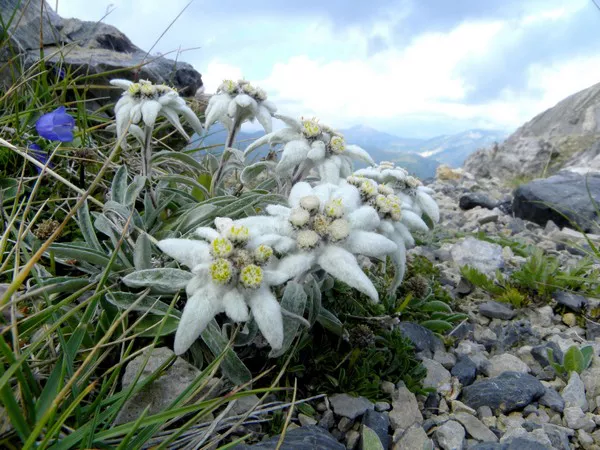Cabbage, a nutrient-rich and versatile vegetable, is a staple in many cuisines worldwide. However, like all plants, cabbages are susceptible to various pests that can wreak havoc on the crop and reduce yields. To ensure a bountiful and healthy harvest, it is essential for farmers and gardeners to be vigilant in identifying and treating cabbage pests. In this article, we will explore effective strategies to treat cabbage pests and discuss how to safeguard your cabbage plants.
1. Identifying Common Cabbage Pests
Cabbage Aphids (Brevicoryne brassicae)
Cabbage aphids are small, soft-bodied insects that feed on the sap of cabbage plants. They are typically green or gray in color and cluster on the undersides of leaves, causing stunted growth and deformed leaves.
Cabbage Loopers (Trichoplusia ni)
Cabbage loopers are caterpillars that belong to the moth family. They have a looping motion as they move and feed on cabbage leaves, leaving behind irregular holes and skeletonized foliage.
Cabbage Worms (Pieris rapae)
Cabbage worms are the larvae of white butterflies. They are green with faint yellow stripes and feed voraciously on cabbage leaves, causing significant damage to the plant’s foliage.
Diamondback Moths (Plutella xylostella)
Diamondback moths are small grayish-brown moths with a distinct diamond-shaped pattern on their wings. Their larvae, known as diamondback caterpillars, chew irregular holes in cabbage leaves.
Slugs and Snails
Slugs and snails are mollusks that feed on cabbage leaves, leaving behind large irregular holes and a silvery slime trail.
2. Organic Remedies for Cabbage Pests
Handpicking
For small infestations, manually remove pests from the cabbage plants. Handpick aphids, caterpillars, and worms and dispose of them appropriately.
Beneficial Insects
Encourage natural predators of cabbage pests to control their populations. Ladybugs, lacewings, and parasitic wasps are beneficial insects that feed on aphids and caterpillars.
Neem Oil
Neem oil is an effective organic remedy for cabbage pests. Dilute neem oil with water according to the manufacturer’s instructions and spray it on the cabbage plants. Neem oil disrupts the pests’ life cycle and acts as a repellent.
Homemade Sprays
Create homemade sprays using garlic, onion, or hot pepper. Blend these ingredients with water, strain the mixture, and spray it on the cabbage plants to deter pests.
3. Integrated Pest Management (IPM) Techniques
Crop Rotation
Practice crop rotation to break the life cycle of cabbage pests. Avoid planting cabbages in the same location year after year to reduce the buildup of pests in the soil.
Trap Crops
Use trap crops, such as radishes or mustard greens, to lure pests away from the main cabbage crop. The pests will preferentially infest the trap crops, leaving the cabbages relatively unharmed.
Floating Row Covers
Cover young cabbage plants with floating row covers to physically prevent pests from reaching them. Ensure the covers are properly secured to prevent any gaps for pests to enter.
Bacillus thuringiensis (Bt)
Bt is a naturally occurring bacterium that is toxic to certain caterpillar pests, including cabbage loopers and diamondback moths. It is available as a commercial product and can be applied to cabbage plants as a biological pesticide.
4. Cultural Practices to Reduce Cabbage Pests
Proper Plant Spacing
Give cabbage plants enough space to grow and allow air circulation, reducing the risk of pests and diseases.
Regular Inspections
Inspect cabbage plants regularly for early signs of pest infestations. Early detection allows for swift action and minimizes damage.
Weed Management
Keep the cabbage patch weed-free, as weeds can harbor pests and compete for nutrients with the cabbage plants.
5. Preventive Measures
Clean Garden Tools
Sanitize garden tools to prevent the spread of pests from one plant to another.
Healthy Soil
Maintain healthy soil by adding organic matter and compost. Healthy plants are more resilient to pests and diseases.
Time Planting Wisely
Time cabbage planting to avoid peak periods of pest activity. Early planting can help avoid the worst infestations.
6. Chemical Pesticides (As a Last Resort)
Caution and Proper Usage
Chemical pesticides should be used as a last resort and with caution. Follow the manufacturer’s instructions and guidelines for safe application.
Targeted Applications
Use pesticides that target specific pests to minimize harm to beneficial insects and the environment.
Conclusion
Successfully treating cabbage pests requires a combination of vigilance, early detection, and appropriate action. By identifying common cabbage pests and employing organic remedies, integrated pest management techniques, and cultural practices, farmers and gardeners can effectively protect their cabbage crops and ensure a bountiful harvest. Prioritizing preventive measures and using chemical pesticides as a last resort will not only safeguard the cabbage plants but also promote a sustainable and eco-friendly approach to gardening. With proper care and attention, your cabbage plants will thrive and delight you with their vibrant and healthy leaves throughout the growing season.


